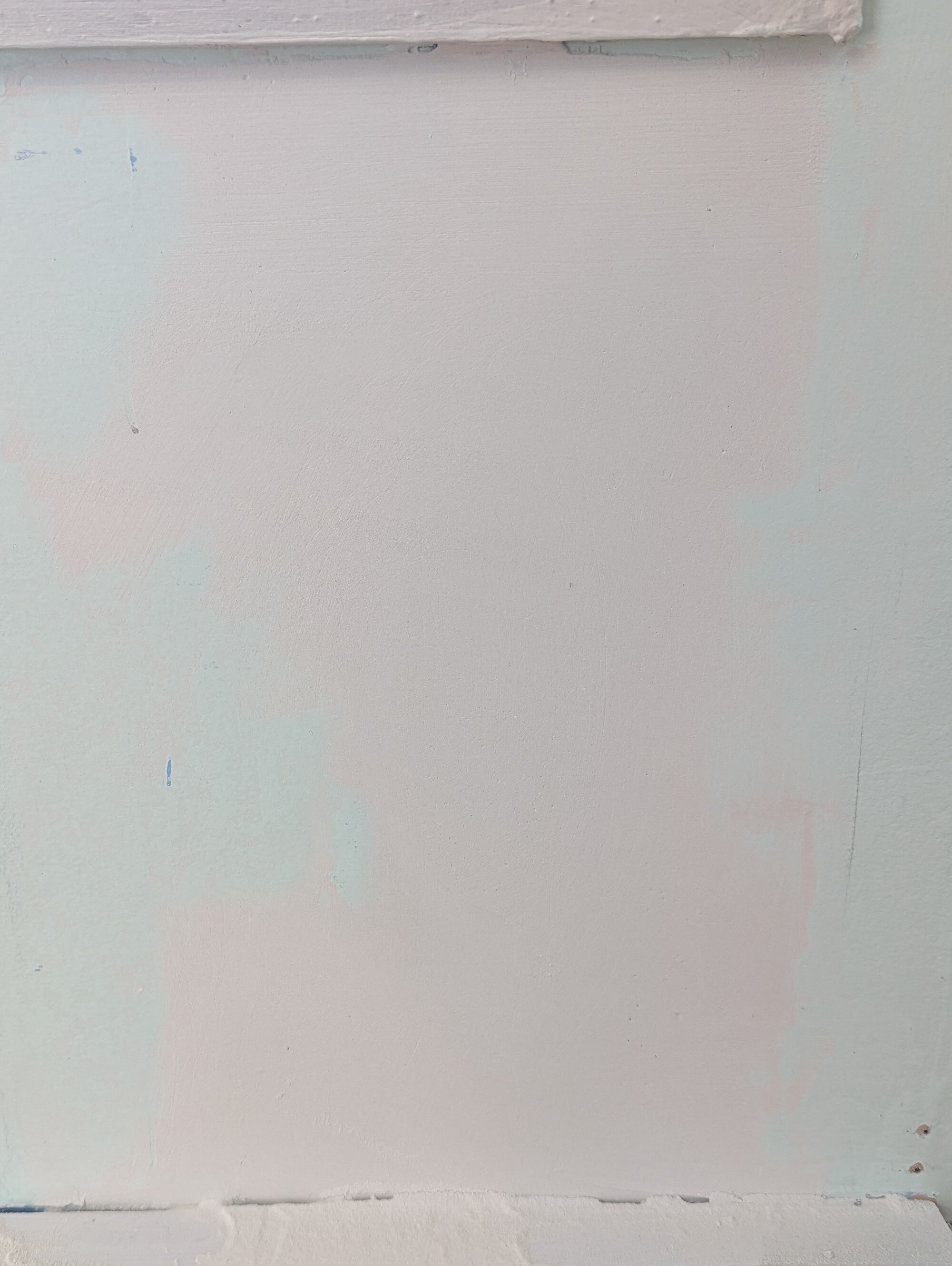I am renovating my son’s bedroom and trying to make the walls as nice as is reasonable before repainting. There are a few cracks like this in the paint. It looks like on top of the drywall there is paint, wallpaper, and then a few more layers of paint. The cracks could be at the seams of the drywall from expansion and contraction. They could be at the seams of the wallpaper. They could be something else. Most of the cracks come straightish down below the sides of windows, which makes me think drywall seams.
I gouged out one crack and filled it with joint compound to see how that works. Since the drywall is old, it was really hard to tell if this is at a drywall seam or not - there are places where previous work, maybe mouse damage, and who knows what else has made the drywall crumble from behind. These are the joys of an older house!
How would you handle this?
Are the cracks just in the paint, or do they go all the way through to the drywall beneath?
Drywall joint compound has no flex. These cracks were caused by the wall moving via some means. Either thermal expansion and contraction, the house settling, or some other construction putting torsion on it. Therefore, if you fill it with joint compound it’ll just crack again. The “correct” method I suppose is to notch it out and make a joint over it with seam tape and joint compound, then sand it flat, touch it up, sand it flat again, etc.
Here in reality, though, I had several of these in the walls in my house (particularly in the corners) and I just filled them in with painter’s caulk – which does flex. Screw it. It’s getting painted over anyway. I’ve had no issues, and I probably avoided taking years off my life not only in aggravation but also in not breathing yet more drywall dust.
I think there’s a “right” way to do this and a “temporary” way to do this.
Temporary: Paint with a brush and jam paint into the cracks to fill them. Paint again if necessary.
Right: Remove wallpaper. Paint. This will be MUCH more work and could lead to replacing the drywall which could uncover mold or other problems in the walls and turn “just painting” into a MAJOR PROJECT.
The choice is yours.
The worst part is the temporary fix will last basically forever if nobody wants to repaint and they use enough goopy latex paint
Nothing is more permanent than a temporary fix
Not sure that’s all bad.
I dont think just filling it with joint compound would be enough, since its breaking from ongoing house movment.
I’ve used Drywall Joint Tape to properly repair these, allowing ongoing house movement without these cracks reoccuring.
Its defiantly more labor intensive, since you need to apply drywall plaster to spread over, then sand it down smooth, before doing a larger paint.
I grabbed some tape and will do that repair. Thankfully, I have taped drywall before so this is not new. I don’t think my wife will be thrilled that this is going to add a day or two until we can paint, but she will agree that it is better to do it right than fast.
If you get setting compound (the powder you mix with water rather than the pre-mix stuff), it sets much quicker, and you can sand and paint the same day
Ditto this. I use Easy Sand 45. You get 45 minutes to work, before it sets up. Definitely ready to paint the same day. I also recommend folding your tape in half and tearing off the hard edge. When I do this, I find the tape to be a bit more forgiving and easier to hide. Cheers!
Thank you for that tip!
Of note, that stuff works great, but you need to be very sparing with it, as it very difficult to sand compared to the premixed stuff. Make sure you have it as close to the way you want it to look as you are able before you let it dry. A lot of drywallers use this stuff for pre-filling poor, uneven drywall board work before taping, as it is very hard stuff. But it can take a lot longer to dry that way than the bag would suggest. Sheetrock 90 turned into Sheetrock Maybe Tomorrow in my kitchen reno after I used it to replace sections along the edges of some damaged drywall that tore out when I removed the old tile backsplash.
Take a rasp and putty knife and try to remove some material (not into the drywall, just take off paint and mud layers) so that you have a recessed area for the tape the go. This will prevent you from needing to build out the area so much to hide the repair, and is very necessary at the edge of the corner bead otherwise the metal edge that forms the corner won’t actually be the corner anymore (so there’ll be a weak and ugly “wave” in the line of the corner).
Personally I don’t think you would need the tape. It’s usually for the gaps between sheets of drywall which can be significantly wider than these cracks. You should be fine just filling with the drywall compound and sanding.
For this you might end up seeing the thickness of the tape beneath the new layer of paint afterwards.
defiantly
Have you tried stuffing instant noodles or rice in the cracks?
I get the feeling this is a joke. If it’s not a joke please elaborate!
I’ve seen some weird stuff to fix a aeky basement like someone shoving dryer sheets in basement wall rod holes to make a paintable surface for drylock (it didn’t work).
There is nothing holy in home repair anymore with all these short turnaround corners cut garbage flipped houses on the market these days.
tiktok trend of making a “cement” off food stuffs and and sanding/painting it
Ah I see. There truly is nothing holy. Thanks for the explanation!
You might want to use mesh tape on the big cracks to help stop recracking. I would poke around and see if the whole section is damaged too. You can replace large chuncks of drywall pretty easily and cheaply so no sense keeping damaged drywall if you’re doing work anyway.
The biggest issue is what caused the crack to begin with. If it is settling, make sure there won’t be any more of that before doing a repair to the crack.
Credentials - working on a house with foundation problems and water damage
Can I do mesh tape over the cracks as they are (with some initial sanding to remove high points), or do I need to strip it down to drywall first? Getting down to drywall would be tricky without damaging the drywall
Any settling should be long finished. The bedroom is on the second floor, and the additions that border these walls were completed ~30 years ago. The drywall in this room predates that addition, but these cracks are through layers of paint that came after the additions. Upon further inspection, I think the weak drywall is limited to a much smaller area than I first anticipated. That area has no cracks and will be trimmed with a cover out in for better plumbing access anyway.
It is your choice on sanding. Sanding down the crack/tape area below grade will make the flattest patch. The alternative is feathering out your joint compound further to hide the bump. You’ll be surprised how thick tape seems when you’re going for a smooth finish.
I like the flat (presanded) option because the bump option bothers me even though nobody else sees the difference.
I gouged out one crack and filled it with joint compound to see how that works.
Fellow “old house” owner here. I’ve got very similar cracks and similarly old drywall. Sanding it down and filling with joint compound was my plan. How did that work out?
Saving this post to see what kind of advice you get so I can try too.
Joint compound can’t span cracks without just cracking again; it needs to be stabilized with something. Usually that’s the embedded tape, but it could also be fiber-reinforced compound or something like that too I suppose.

Thank you to everyone who commented. If these cracks do not come back it was worth the time to do it right. If not, then at least I got to practice my drywall finishing skills.



